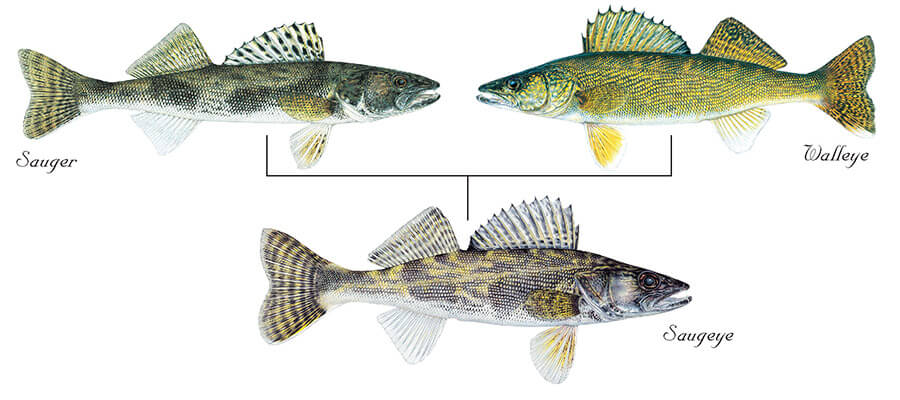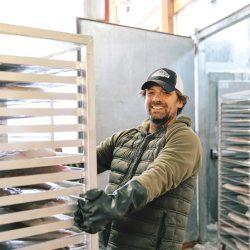Nothing Fishy Here
A tasty hybrid fish is making its way to your local grocery store.
As a state surrounded by the Great Lakes and home to countless spring-fed creeks, lakes, and rivers, Wisconsin is uniquely positioned to produce freshwater fish. Yet the aquaculture industry — which contributes $21 million to the state’s economy each year — faces some unique challenges, including the lack of specialty fish.
But now there’s a new fish on the block.
Meet the saugeye. A cross between a sauger and a walleye, both native to Wisconsin, saugeye are some of the fastest growing freshwater fish out there. UW researchers realized their potential more than twenty-five years ago, but the project was set aside when funding dried up.
Now a new collaboration among the UW’s Aquaculture Program, UW-Extension, and UW-Stevens Point has brought the project back to life. Jim Held, an outreach specialist at UW-Extension, says they’re working together to make this fish widely available to both farmers and consumers, contributing to the state’s aquaculture industry.
“The main goal is to produce a food fish — a fish that can be domestically cultured for human consumption,” explains Held.
Extension ran a pilot study in 2013, funded by a grant from the U.S. Department of Agriculture, to see how the fish would fare if raised commercially. The trial involved twelve fish farms across the state and was quite successful. One of the farms, North Side Enterprises in Black Creek, is selling the fish at its small shop.
“We’ve gotten to the point where we can go from egg to plate with this fish in about seven to eight months,” Held says.
Catfish and carp take significantly longer to mature. Held says saugeye also provide an environmentally friendly alternative to walleye, a popular fish that is among the most heavily exploited in North America. Most people can’t taste the difference.
“We’re really excited about this new hybrid,” he says — and he’s especially excited about getting it to market. You may find saugeye fillets at your local grocery store within the next few years.
Published in the Summer 2014 issue




Comments
No comments posted yet.